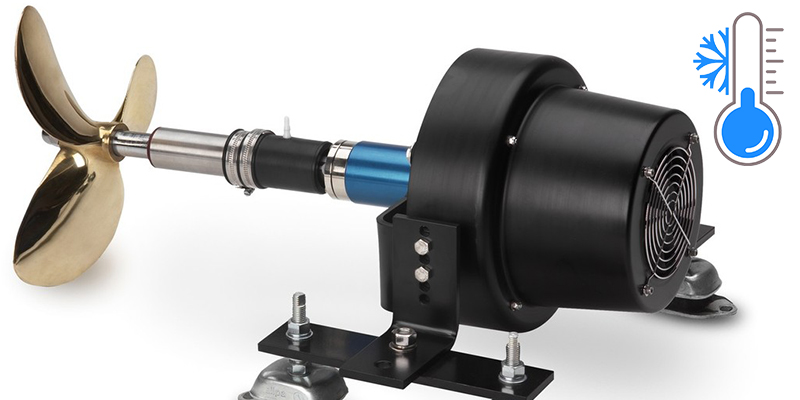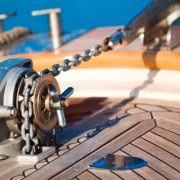Winterizing your inboard boat engine is a crucial part of maintaining your vessel, especially in regions where temperatures drop below freezing. Proper winterization protects the engine from freezing, corrosion, and other potential damage during the off-season. This guide will walk you through the process of winterizing an inboard boat engine to ensure it’s ready to perform when the warmer months return.
Why Winterization is Important
Water left in your engine can freeze and expand, causing cracks in the engine block, manifolds, or other components. Additionally, fuel left untreated can degrade, leading to varnish buildup and corrosion. Winterizing your engine prevents these issues, saving you from costly repairs and ensuring a longer lifespan for your engine.
For boats with an inboard engine or outboard motor, it’s crucial to winterize properly to avoid damage. Raw water left in the cooling system can freeze, leading to cracks in the exhaust or cylinders. Applying spray fogging oil to the engine’s internal components helps protect against corrosion. Be sure to spray fogging oil into the intake manifold to coat the cylinders, providing an additional layer of protection throughout the winter months.
Tools and Materials You’ll Need
- Marine engine antifreeze (non-toxic, propylene glycol-based)
- Fuel stabilizer
- Oil and oil filter
- Marine fogging oil
- Bucket or large container (if draining the coolant system)
- Wrenches and screwdrivers
- Hose or flushing kit
- Funnel
- Rags and absorbent pads
- Spark plug socket
- Grease for lubrication points
- Drain pan
To fully winterize your inboard boat, it’s important to pay attention to key systems like the water pump, engine, and exhaust manifold. Start by draining the engine and disconnecting the hose to clear out any water inside the block and risers. Run fresh water through the cooling system and ensure the raw water pump and impeller are functioning properly. Once the engine is flushed, use non-toxic propylene glycol antifreeze to protect against freezing. Change the engine oil, lubricate all points, and spray a small amount of oil into the cylinders. Don’t forget to winterize the exhaust system and check for any leaks around the water intake or exhaust outlets. Winterizing your boat’s engine and transmission will help avoid costly repairs and ensure your boat is ready for the next season.
Step 1: Stabilize the Fuel System
1. Add Fuel Stabilizer: Start by adding a marine-grade fuel stabilizer to your fuel tank. This prevents the fuel from degrading and forming varnish in the fuel system. Follow the manufacturer’s instructions for the correct amount of stabilizer.
2. Run the Engine: After adding the stabilizer, run the engine for 10-15 minutes. This allows the treated fuel to circulate through the engine, protecting the carburetor, fuel injectors, and fuel lines from corrosion.
Step 2: Change the Oil and Filter
1. Warm the Engine: Warm up the engine to ensure the oil flows more easily. This also helps suspend any contaminants in the oil, making it easier to remove.
2. Drain the Oil: Use a drain pan to catch the old oil as you remove the drain plug. Allow the oil to drain completely.
3. Replace the Oil Filter: Remove the old oil filter and replace it with a new one. Make sure to coat the gasket of the new filter with a bit of fresh oil before installation.
4. Refill with Fresh Oil: After draining the old oil and replacing the filter, refill the engine with fresh marine-grade oil. Consult your owner’s manual for the correct type and amount of oil.
Step 3: Flush the Cooling System
1. Attach a Flushing Kit: Connect a hose to your engine’s flushing port or use a flushing kit to circulate fresh water through the cooling system. This removes salt, debris, and old coolant from the engine.
2. Run the Engine: Start the engine and let it run for about 5-10 minutes to ensure all the old coolant or saltwater is flushed out.
3. Drain the Cooling System: Depending on your engine, you may need to remove drain plugs or open petcocks to drain the remaining water from the cooling system. Make sure to catch the drained water in a bucket or container.
4. Add Antifreeze: Refill the cooling system with marine engine antifreeze. Run the engine briefly to ensure the antifreeze circulates through the entire system, including the engine block, manifolds, and hoses. The antifreeze prevents any residual water from freezing during winter.
Step 4: Fog the Engine
1. Remove the Air Filter: Take off the air filter to access the carburetor or throttle body.
2. Apply Fogging Oil: While the engine is running at a fast idle, spray marine fogging oil directly into the carburetor or throttle body. This coats the internal components with a protective layer of oil, preventing corrosion during storage.
3. Shut Off the Engine: Continue spraying until the engine stalls or shut it off manually if the fogging oil doesn’t cause it to stall. The engine is now protected from internal rust and corrosion.
Step 5: Protect the Electrical System
1. Disconnect the Battery: Remove the battery from the boat and store it in a cool, dry place. Clean the battery terminals and apply a light coat of grease to prevent corrosion.
2. Charge the Battery: Keep the battery on a maintenance charger during the off-season to ensure it remains fully charged and ready for use in the spring.
Step 6: Lubricate and Protect
1. Grease Moving Parts: Lubricate all moving parts, such as the throttle and shift linkages, steering components, and any other fittings specified by your boat’s manufacturer. This prevents rust and ensures smooth operation when you’re ready to hit the water again.
2. Inspect Belts and Hoses: Check the condition of all belts and hoses. Replace any that are cracked, frayed, or show signs of wear.
Step 7: Cover and Store the Boat
1. Cover the Engine: If your boat is stored outside, ensure the engine is covered to protect it from the elements. Use a high-quality boat cover that’s properly secured to prevent water, snow, or debris from entering.
2. Ventilate the Engine Compartment: Ensure the engine compartment is well-ventilated to prevent condensation and mold growth during storage.
3. Store the Boat Properly: If possible, store your boat in a dry, temperature-controlled environment. If storing outside, make sure the boat is properly supported and covered to prevent water from accumulating and causing damage.
How to Winterize a Inboard Boat Engine: Final Thoughts
Winterizing your inboard boat engine is an essential maintenance task that protects your investment and ensures your boat is ready to go when the boating season returns. By following these steps, you can prevent costly damage, extend the life of your engine, and enjoy peace of mind during the winter months. Proper preparation now will lead to a smooth start when it’s time to hit the water again.










